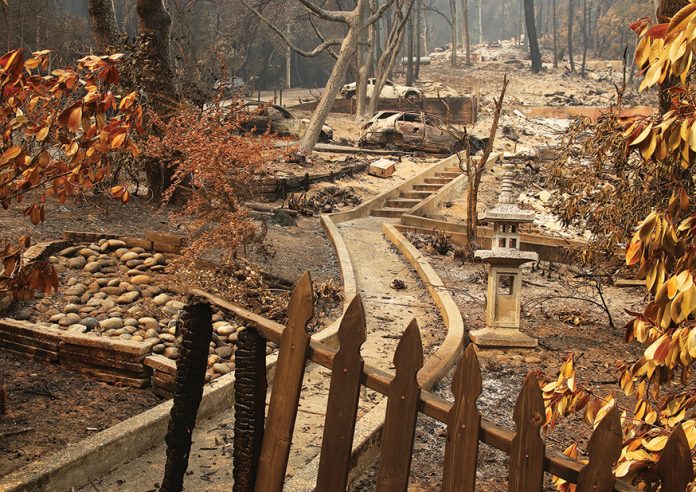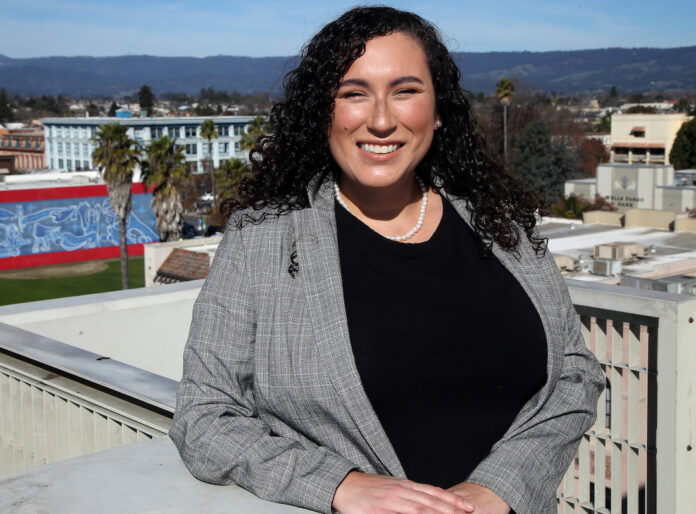Even if you don’t know Joan Osborne’s name, there’s a good chance you’ve heard “One of Us.” On a ranking of the most popular songs of 1995, that tune would surely be close to the top.
However, Osborne is far from a one-and-done “one-hit wonder.” Blessed with mountain-moving pipes, a deep knowledge of all musical genres and an ability to leap from frontwoman pop star to a touring vocalist with the post-Jerry Garcia Grateful Dead to a singer with the Motown house band the Funk Brothers, she’s a rare breed of musician who doesn’t let ego motivate her career.
The road Osborne’s traveled might have been full of twists and turns, and she might have had occasional curveballs come her way, but after 25 years and a versatile slew of records, she’s learned how to hit anything thrown over the plate—with power.
Osborne’s September 2020 release Trouble and Strife jumps into the signs of the times before you drop the needle on the record: The cover art, a collage created by the musician, encapsulates the horror going on in the world around us: a little boy points a handgun, visual representations of the pushback against Black Lives Matter, global warming and violence towards Asian Americans. An image of Osborne, sporting a vintage astronaut suit and helmet, is plastered in the middle of the chaos, smiling and holding a mic; she’s offering a talisman, in the form of her music, as protection from a minefield of hatred.
“These are all things we’ve been struggling with for decades, but they’ve reached a fever pitch recently,” Osborne says. “I try to bring a magic wand to this crazy situation, which is my microphone, which is music—songs aren’t going to change the world, but songs change human beings and attitudes.”
“What’s That You Say” is driven by an R&B backbone drenched in the Meters’ can’t-stop-listening brand of funk, courtesy of Osborne’s longtime studio band; her soulful alto vocals blow through the instrumentals like El Nino whipping through the Santa Anas. The muffled sound of a woman’s voice speaking in Spanish glides into the background every so often.
Osborne describes the song as a response to the ongoing horrendous situation at the U.S.-Mexico border.
“I grew up thinking people came to America from different lands and brought their dreams and their talents and their desires to succeed in a place where they can be free,” Osborne explains. “It seems like a lot of the discussion in recent years has turned that idea on its head—telling us these are people we should be afraid of. When I see someone who comes here from another country, I see someone who’s working their ass off to survive.”
Osborne reached out to Raices (Refugee and Immigrant Center for Education and Legal Services)—a nonprofit that provides free and low-cost legal services to underserved immigrant children, families and refugees—and they connected her with Ana Maria Rea. She came to America from Mexico City after her father had been kidnapped and held for ransom. Though he was eventually let go, Rea’s family no longer felt safe living in Mexico.
“[Rea] is a beacon of light which brings all this energy and positivity,” Osborne says. “We need that—so much of what’s being said is not being said by the immigrants themselves. I thought, ‘Here’s my chance to pass the microphone to somebody to tell their story.’ [Rea] is a pillar of our society.”
Osborne approached Rea as if she was a journalist, covering the woman’s arduous voyage to the safety she eventually found in Texas after fleeing Mexico.
“It was intense,” Osborne reveals. “We were both crying.”
The story Rea tells in Spanish throughout “What’s That You Say” is about escaping to the U.S. as a child and growing up feeling like an outsider. It took time, but Rea was accepted into the Texas community that she calls home. She speaks the final line of the tune: No tengo miedo (“I’m not afraid.”)
Meanwhile, Osborne doesn’t try to hide that David Bowie was a major inspiration behind “Boy Dontcha Know,” both in sound and message. It would fit in alongside “Changes” on Bowie’s Hunky Dory. When Osborne first heard the British rocker on the radio, she felt like she was tasting a new, vibrant flavor of ice cream. She admits it was sometimes frightening, but she realized that music could be a sweet catalyst for change and self-expression. It didn’t matter whether it was cold or lacking definitive sexual identity.
“And when she’s lookin’ good, so good, mighty good, she feels a target on her back/ And if she doesn’t try to soothe your ego, she stands accused of a mood so black, so black,” croons Osborne. “She’d rather be a boy, dontcha know.”
In addition to releasing Trouble and Strife during her Covid-related time away from touring, Osborne spent time with her teenage daughter.
“When you’re touring, it means being away from your family unless you can bring them with you,” she says. “But once your kids are school-age, it’s much harder to bring them with you. Covid has allowed me to spend more consistent time with [my teenage daughter] because I’m stuck at home—though she might not think that’s a good thing. This time has been very precious to me since she’ll be going off to college in a couple years.”
Osborne seems to have a knack for finding pockets of brightness even under a dark sky.
“Covid has forced us to push the pause button on our normal lives, has allowed us to get off of these treadmills that we put ourselves on—gotta make money, gotta do this, gotta accomplish that,” she says. “We’re always going and going and going, and we don’t have time for self-reflection or to stop and take a breath and just exist.”
She acknowledges the tragedy, too; the sickness and death, as well as the way the pandemic hit so many musicians financially.
“Covid halted all live music,” Osborne says. “So, income sources completely dried up for many artists, many of whom are my friends.”
Osborne is adamant about the importance of music, not just for performers but for audiences. And the extended absence of live music has profoundly impacted the world.
“There’s something very unique and special that happens within an audience in a community when you have live music,” she says. “Music is more important than ever nowadays, living in a world so divided.”
On Feb. 22, Osborne will release Radio Waves, a collection of unreleased, live in-studio performances. The 13 covers, spanning back to 1995, feature deep cuts from Sly and the Family Stone, Bob Dylan, Bill Withers and 10 other greats.
“People seem very alienated from each other, and music has this ability to overcome that and allow people to get together and be in the same physical space and enjoy the experience without involving politics, or opinion, but just as fellow human beings,” Osborne says.
Joan Osborne plays Friday, Jan. 21, at the Rio Theatre, 1205 Soquel Ave., Santa Cruz. 8pm; $36.75-47.25. Proof of vaccination or negative Covid test (within 72 hours of the show) required. folkyeah.com.





















